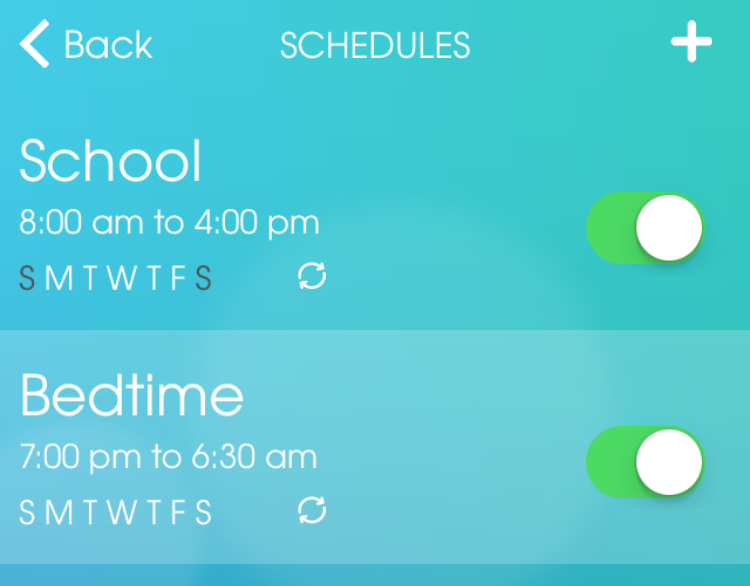Managing your child's iPod use with OurPact
/by Eric
For his birthday last September, our eight year old asked for an iPod Touch. He’s been in his room ever since.
But seriously, when he got the iPod, we were able to set up a childrens’ account through Family Sharing in iOS8, which makes it so he can’t purchase new apps without first getting approved. We used Restrictions to turn off Safari and In-App purchases and tried to make it as safe an environment as possible.
After seeing how his parents have a tendency to be glued to their own devices, it shouldn’t have surprised us when he disappeared into his room and didn’t come out unless summoned. I looked into the different parenting apps and discovered:
- An app that filled the screen with an alert that couldn’t be turned off until usage was allowed again (unless you reset the phone and didn’t load that app)
- An app that used a VPN to allow you to monitor and block your child’s usage from your phone (except if the phone went to sleep, then when it was turned on again the VPN was disabled)
- An app that produced an alarm that reminded him that it was time to turn off the phone (which, after hitting OK let him ignore and continue playing)
Finally, an actual useful solution was found - the OurPact app for iDevices (Android development is currently ongoing).
OurPact is an app you install on your device to schedule app usage on your children’s devices. Once I set up an account in the app, I was able to pair my son’s iPod to it and set up schedules where the device is blocked – where all non-Apple installed apps are turned off.
Additionally we have the ability to grant access remotely during these blocked hours (“Your homework is done early? Okay, you can have fifteen minutes of apps”) and block apps when they’re not (“Why can't he hear me calling? He’ll certainly hear me now…” – blocks apps – “Oh, hi there.”).
You can even add multiple iDevices to monitor, which we did when I got a new phone and the younger siblings inherited my old one.
The only downsides we’ve noticed are that there isn’t yet the ability to give a daily allowance of hours and there’s no ability to block only certain apps – though we’ve been told those features are in development in future versions of the app.
OurPact is free for iOs and has been a nice way for us to help manage device usage in our home.









